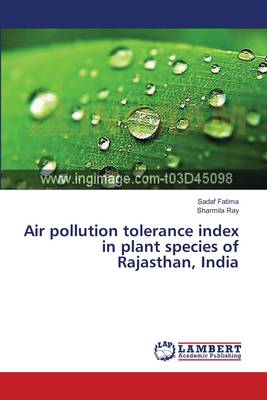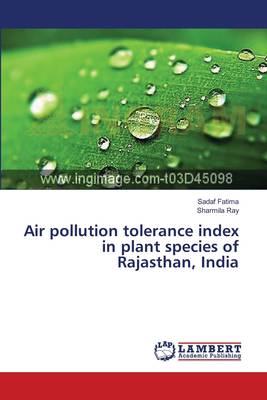
- Afhalen na 1 uur in een winkel met voorraad
- Gratis thuislevering in België vanaf € 30
- Ruim aanbod met 7 miljoen producten
- Afhalen na 1 uur in een winkel met voorraad
- Gratis thuislevering in België vanaf € 30
- Ruim aanbod met 7 miljoen producten
Zoeken
Air pollution tolerance index in plant species of Rajasthan, India
Sadaf Fatima, Sharmila Ray
Paperback | Engels
€ 48,95
+ 97 punten
Omschrijving
Water and land pollution, both are very dangerous. But, in contrast air pollution has its own peculiarities due to its trans-boundary dispersion of pollutants over the entire world. In any well planned urban set up, industrial pollution takes a back seat and vehicular emissions take precedence as the major cause of urban air pollution. No physical or chemical method is known to ameliorate industrial or traffic air pollution. A suitable alternative way is to grow green plants in and around industries, traffic areas and along roadsides. Response of plants towards air pollution was assessed by air pollution tolerance Index (APTI) value. Four physiological and biological parameters including leaf relative water content (RWC), ascorbic acid (AA) content, total leaf chlorophyll (TCh), and leaf extract pH were used to develop an APTI. The vegetation monitoring in terms of its APTI acts as a Bioindicator of air pollution and has been incorporated in the assessment of the present study.
Specificaties
Betrokkenen
- Auteur(s):
- Uitgeverij:
Inhoud
- Aantal bladzijden:
- 56
- Taal:
- Engels
Eigenschappen
- Productcode (EAN):
- 9783659497308
- Verschijningsdatum:
- 21/12/2013
- Uitvoering:
- Paperback
- Afmetingen:
- 150 mm x 220 mm
- Gewicht:
- 95 g

Alleen bij Standaard Boekhandel
+ 97 punten op je klantenkaart van Standaard Boekhandel
Beoordelingen
We publiceren alleen reviews die voldoen aan de voorwaarden voor reviews. Bekijk onze voorwaarden voor reviews.








